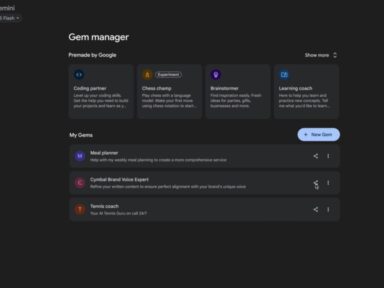Google has announced a significant expansion of its AI capabilities, bringing AI Mode to more users worldwide with support for 45 new languages. This move represents a major step forward in making cutting-edge AI technology accessible to billions of people across different linguistic backgrounds and cultural contexts.
Breaking Down Language Barriers in AI Technology
Google’s AI Mode was initially launched in English, but the company recognized the importance of making these powerful tools available to a broader audience. The expansion now includes support for languages such as Spanish, Portuguese, Japanese, Korean, Hindi, Arabic, and many others, covering regions across Asia, Europe, the Americas, and Africa.
This multilingual approach addresses one of the most significant challenges in AI development: ensuring that technological advances benefit people regardless of the language they speak. By supporting 45 additional languages, Google is effectively democratizing access to AI capabilities for approximately 5 billion people worldwide who speak these languages.
The expansion isn’t just about translation. Google has worked to ensure that the AI understands cultural nuances, idioms, and context-specific language use across different linguistic traditions. This culturally-aware approach helps deliver more accurate, relevant, and helpful responses to users in their native languages.
Enhanced AI Features Across Google’s Ecosystem
With the language expansion, Google is bringing a suite of enhanced AI features to users globally. The company has integrated these capabilities across its ecosystem, including Search, Maps, Gmail, and other popular Google products.
In Google Search, AI Mode now provides more intuitive responses to complex queries in multiple languages. Users can ask questions in a conversational manner and receive comprehensive answers that take into account local contexts and preferences. For example, someone searching in Hindi can ask about local festivals and receive culturally relevant information without having to translate their query into English first.
Google Maps has also received AI enhancements with multilingual support, allowing users to discover local attractions, navigate unfamiliar areas, and find recommendations that respect cultural preferences and local customs. The AI can now understand and respond to location-based queries in dozens of languages, making travel and exploration more accessible.
Gmail and Google Workspace tools have similarly benefited from the expansion, with AI-powered writing assistance, summarization, and organization features now available in multiple languages. This helps users communicate more effectively in their preferred language while maintaining the nuanced understanding that AI provides.
The Technology Behind Multilingual AI
The expansion to 45 languages represents a significant technical achievement. Google has leveraged its advanced language models and machine learning capabilities to train AI systems that can understand and generate text in multiple languages with high accuracy.
The company has employed a combination of techniques, including transfer learning, where knowledge gained from training in one language is applied to others, and specialized language-specific training to capture unique linguistic features. This hybrid approach allows the AI to maintain high performance across diverse language families.
Google has also invested in extensive testing and quality assurance processes, working with native speakers and linguistic experts to ensure that the AI responses are not only grammatically correct but also culturally appropriate and contextually relevant in each supported language.
The company emphasized that this expansion is just the beginning, with plans to continue adding more languages and dialects to make AI accessible to even more people around the world. The goal is to ensure that language is never a barrier to accessing the benefits of artificial intelligence.
*conclusion
This expansion of Google’s AI Mode to 45 additional languages marks a significant milestone in making advanced AI technology more inclusive and globally accessible. By breaking down language barriers, Google is enabling billions of people to interact with AI in their native languages, potentially transforming how they search for information, communicate, and use digital tools in their daily lives. As AI continues to evolve, this multilingual approach sets an important precedent for ensuring that technological advancements benefit people across diverse linguistic and cultural backgrounds, rather than being limited to those who speak major world languages.
conclusion*
Which languages are now supported in Google’s AI Mode?
Google’s AI Mode now supports 45 additional languages beyond English, including major languages like Spanish, Portuguese, Japanese, Korean, Hindi, Arabic, and many others across different regions worldwide.
How many people will benefit from this language expansion?
According to Google, approximately 5 billion people worldwide speak the languages now supported by AI Mode, making this expansion a significant step toward global AI accessibility.
Will AI Mode work the same way in all supported languages?
While the core functionality is consistent across languages, Google has tailored the AI to understand cultural nuances, idioms, and context-specific language use for each supported language to ensure relevant and appropriate responses.
Which Google products feature the expanded language support for AI?
The expanded language support applies across Google’s ecosystem, including Search, Maps, Gmail, and other Google Workspace products, bringing AI-powered features to users in their native languages.
How did Google train its AI to understand so many languages?
Google employed a combination of transfer learning (applying knowledge from one language to others) and language-specific training with native speakers and linguistic experts to ensure the AI understands the unique characteristics of each language.
Will Google continue to add more languages in the future?
Yes, Google has indicated that this expansion is just the beginning, with plans to continue adding more languages and dialects to make AI accessible to even more people around the world.
















How would you rate AI Language Translation: Google Expands Support for 40+ Languages?